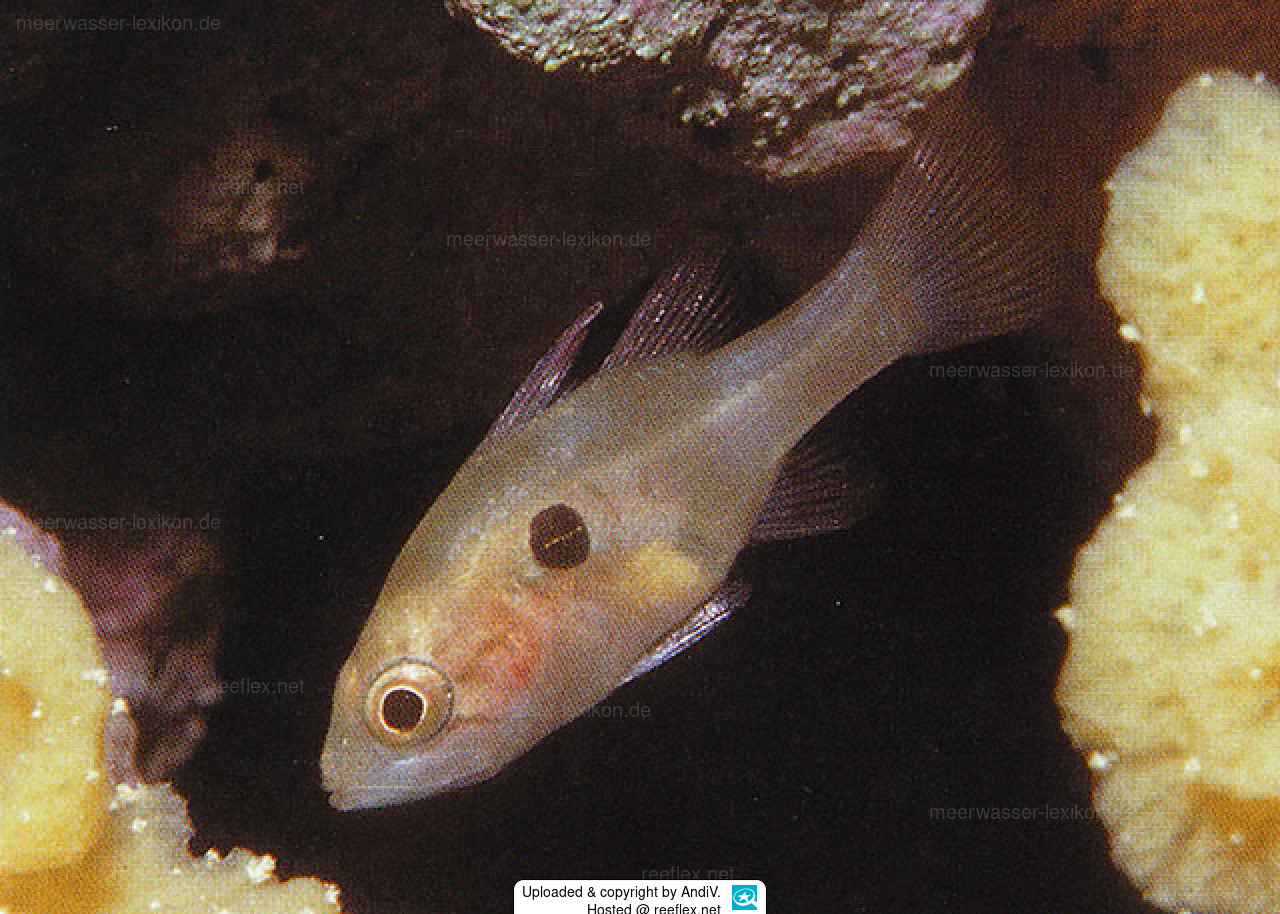Info
(Smith & Radcliffe, 1912)
Very special thanks for the first photo of Apogonichthyoides uninotatus to Dr. Gerry R. Allen, Australia, he has taken the photo at Calamianes Islands,Philippines.
Apogonichthyoides uninotatus occurs solitary or in small groups and is found in dead reefs and mangrove fringe of estuaries and brackish lakes in a depthrange of 0-10 meters.
The Onespot cardinalfish is a noctural moothsbrooder, that feed on benthic invertebrates and zooplankton.
Synonyms:
Amia uninotata Smith & Radcliffe, 1912
Apogon uninotatus (Smith & Radcliffe, 1912)
Apogonichthys uninotatus (Smith & Radcliffe, 1912)
Classification: Biota > Animalia (Kingdom) > Chordata (Phylum) > Vertebrata (Subphylum) > Gnathostomata (Superclass) > Pisces (Superclass) > Actinopteri (Class) > Perciformes (Order) > Percoidei (Suborder) > Apogonidae (Family) > Apogoninae (Subfamily) > Apogonichthyoides (Genus) > Apogonichthyoides uninotatus (Species)
Very special thanks for the first photo of Apogonichthyoides uninotatus to Dr. Gerry R. Allen, Australia, he has taken the photo at Calamianes Islands,Philippines.
Apogonichthyoides uninotatus occurs solitary or in small groups and is found in dead reefs and mangrove fringe of estuaries and brackish lakes in a depthrange of 0-10 meters.
The Onespot cardinalfish is a noctural moothsbrooder, that feed on benthic invertebrates and zooplankton.
Synonyms:
Amia uninotata Smith & Radcliffe, 1912
Apogon uninotatus (Smith & Radcliffe, 1912)
Apogonichthys uninotatus (Smith & Radcliffe, 1912)
Classification: Biota > Animalia (Kingdom) > Chordata (Phylum) > Vertebrata (Subphylum) > Gnathostomata (Superclass) > Pisces (Superclass) > Actinopteri (Class) > Perciformes (Order) > Percoidei (Suborder) > Apogonidae (Family) > Apogoninae (Subfamily) > Apogonichthyoides (Genus) > Apogonichthyoides uninotatus (Species)







 AndiV
AndiV















